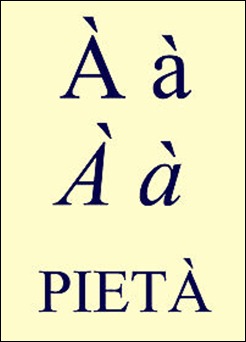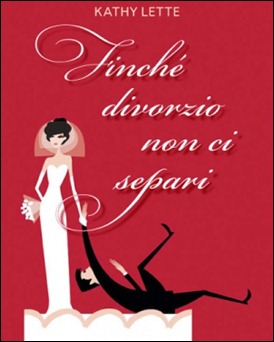Last week in It’s All In The Accent, we took a look at how we use accents in written Italian, and how they can completely change the meaning of some words. Astute students of Italian will have noticed though that we use two different accents: ` accento grave (grave accent) used in open sounds such as è (it is), and ´ accento acuto (acute accent) which we use for closed sounds such as perché (why/because).

Now, if that explanation seems chiaro come la pece (as clear as tar), don’t worry … you’re not alone. It’s not even clear to most Italians … including me! Only Tuscans and Romans are said to be able to distinguish the two different sounds related to these accents. Even at school we’re not taught the difference between them, and in everyday handwriting we tend to simply use an ambiguous small mark resembling a sort of a bowl, a bit like a lazy bracket lying on its back (see image below). Teachers only tend to look for our ability to mark the vowels that need an accent, e basta.

So basically, don’t worry if you end up using the wrong accent, most Italians won’t even notice. Having said that, however, I’ll now try to clarify the two accents … specially for those of you who really like to be 100% correct. I’m writing this with two grammar books open in front of me because … I’m scared I’ll mess it up. Allora, cominciamo dall’inizio (so let’s begin from the beginning):
1. The Easy Bit: The three vowels a, i, u never change sound. The accent used to mark truncated words ending in a, i, u is traditionally the ` grave accent. Some examples are: città (city/town), pietà (pity, mercy), lunedì (Monday), sentì (he/she heard), più (more), Gesù (Jesus), and so on. According to my grammar book, there is no apparent explanation for this!
2. The Harder Bit: The vowels ‘e’ and ‘o’ can have either an open or closed sound. However, the vowel ‘o’ in truncated words such as però (but), sarò (I will be) is generally an open sound, these days, therefore, the rule is that ‘o’ always uses the ` grave accent.
3. Finally … The Really Hard Bit: the majority of truncated words ending in ‘e’ have an open sound, which uses the ` grave accent, e.g. caffè (coffee), è (it is), cioè (that is). But, there’s a small group of words that ends with an ´ acute accent. Here are the most common ones:
affinché = so that, in order that
benché = although
cosicché = so that
finché = until
giacché = as, since
perché = why, because
poiché = as, because
purché = provided that
né … né = neither … nor
sé = himself, herself
numerals ending with tre (three), e.g. ventitré, trentatré, ecc. = twenty-three, thirty-three, etc.
A proposito di ventitré (speaking of twenty-three), in Italian we have the rather nice expression portare il cappello sulle ventitré = to wear one’s hat at 11 p.m. (23:00), referring to the angle of the hat, as shown in the photo below.











Comments:
Linda McIntyre:
Wow! This is the best explanation of this that I have come across. And I was so confused before! Thank you for clearing this up!